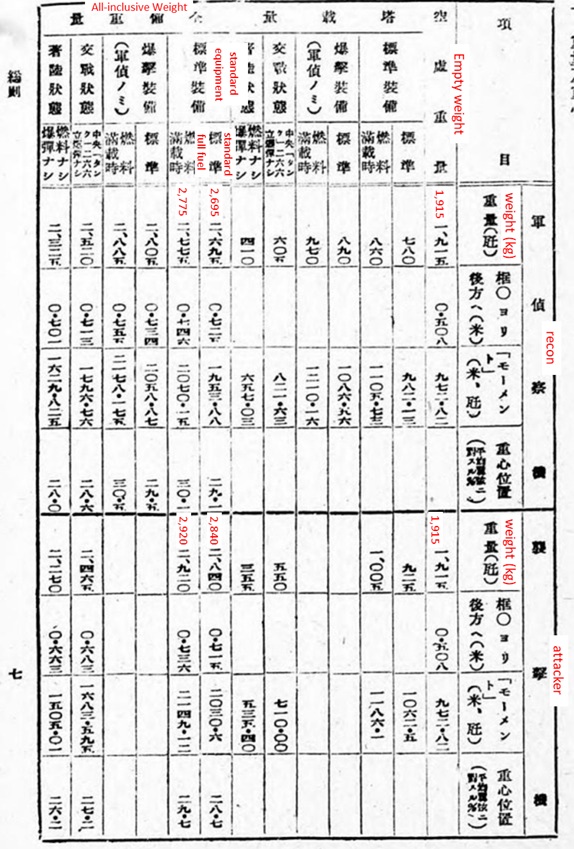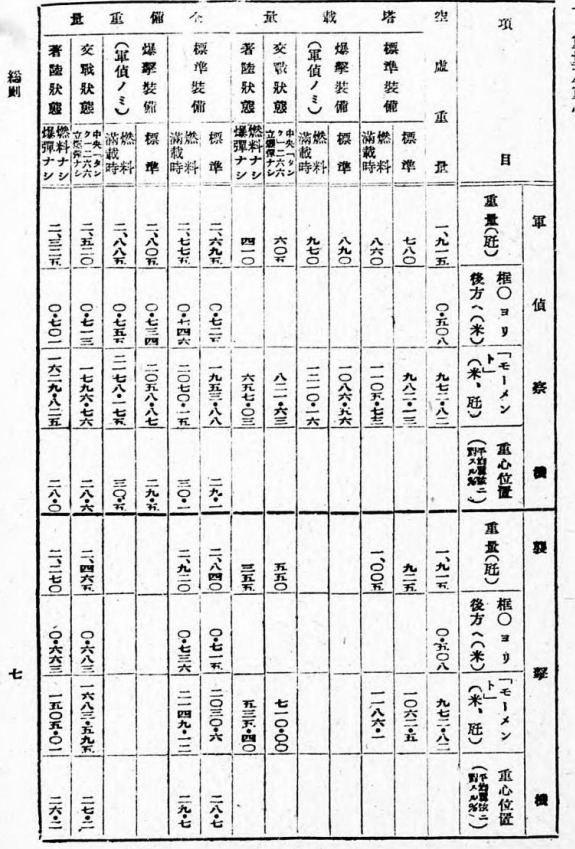Let’s hope it won’t take too much
It doesn’t have page number. It’s called: Appendix IV - Japanese Armor Protection [U.S. intelligence report]
“Everything was better with us, everything was worse with them”
Perhaps as an additional form of protection for already well protected plane if extra weight wasn’t too much of an issue. The fuel tank extinguishing system is usually best known from N1K2-J and few other late war types, however it’s important to know where the use started to understand why only Japanese used them.
The first uses in combat that I can find were with A6M5 and G4M, both of which didn’t have self-sealing fuel tanks at that point. It is well known how IJN took very long to implement self-sealing tanks into their aircraft. In this IJA wasn’t far ahead as their early “leakproof” tanks, which are said to have been only somewhat effective against .30cal. The jump from mainly rifle caliber armed Chinese fighters to US fighters of 1942 and onwards with up to 6x.50cals was too big for Japanese to keep up. In the same year they were still trying to acquire more advanced fuel tank protection technology from Germany. In fighter aircraft Japanese only fielded satisfactory self-sealing tanks from start of 1944, though improvements were still desired. Compare this to other major air powers of the war.
Early on with IJN aircraft, it appears those fuel tank extinguishers weren’t even expected to save the aircraft, but rather put out the fire so the valuable aircrew would have time to jump. The danger was even worse, because non self-sealed tanks didn’t only catch fire easily, but they could also quickly “deform” and explode from large caliber hit and the following fire.
Later on Japanese developed effective self-sealing fuel tanks, but these became thicker and heavier than comparable Allied types. This was mainly a problem for single engine fighters as it was difficult to fit these type of tanks into the wings without sacrifing fuel load. Army was satisfied with Ki-84 with fully self-sealing tanks, even when the range was slightly less than desired. Ki-61 probably couldn’t just switch to the thickest tank type as it’s said these had fuel tank extinguishers as well. Anyway IJN and Mitsubishi had very different approach to this problem: J2M and A7M were made with non self-sealing wing tanks. Only the fuselage tank was self-sealing and all tanks had extinguishers.
The fuel tank extinguishing system was overall very simple: They were just tanks with piping and thermostat as trigger. I don’t see any reason to suspect why the system itself wouldn’t be effective, but without dozens of reports it is impossible to write down any kinds of statistics how they changed results of the combat. This is further complicated by all the very different types of aircraft where the system was used. Furthermore an aircraft which would get to test the system in combat, was already damage, thus it had lower chances of getting back home to report. There are still Japanese archives where something related could be found, but how comprehensive report would one realistically expect?
At any rate the flaws of the system are very obvious:
- CO² or nitrogen bottles and their piping added weight.
- The system could be damaged by hits.
- There was only one shot for each fuel tank.
- It didn’t seal the tank like a self-sealin fuel tank.
Overall well made self-sealing fuel tanks were a better option.
There are few things I have not seen mentioned in other sources than that book:
-IJA used nitrogen extinguishers. I do not know if these changed to CO².
-Some variants of Ki-21, Ki-48 and Ki-49 had extinguishers.
Need
what could be done is: add a modification to “unlock” the better guns like the first Ki-43 (IDK if there’s any diference in performance between the early or late production, if it exist so just add the late variant)
How do y’all right these suggestions out i struggle with them. Also +1!
It’s hard to say, it just works out that way.
Japan really need all the “Attackers/strike aircraft” they can get. I think atleast low/mid- tier wise, they only have one. Big +1!
Did you ever suggest the Kyushu K11W, Mitsubishi Ki-1 “Type-93 Heavy Bomber”, Northrop Gamma or the Tachikawa KI-94-I?
The Ki-94-I will definitely not appear. The rest is a matter of time. I currently have over 80 planes on my suggestion list for Japan, so you’ll have to wait.
That was a yes or no question. Besides that you never know.
I haven’t suggested it yet. Maybe soon
+1
Approved

+1. The late variant could work as both an attacker, as well as a fighter, thanks to its very good agility, and the 12.7s aren’t that bad.
ki-51 with 12.7 mms when?

Well, Willis Augustus Lee “Ching” is considered one of the few people given the title of Honorary asian and fought for it. Cause every ship under his command was taught to treat every weapon like a sniper rifle.
Which means when his ships fired at the Japanese in WW2, none missed. Mind you, this guy is an American and white. So if the asians are being impressed by him, it says a lot back then. The Fat Electrician made a video about him.
Sure. Why not.
Got some information from operational manual about early Ki-51 variant. Here is some additional information:
Te-4 ammo capacity:
For recon variant - 544 rounds (68x8)
For attacker variant - 1020 rounds (68x15)
Picture showing the layout of armor
Spoiler

About weights here is tabled from manuals but I can’t understand it fully, maybe someone will understand it
As it is said at book, 250kg bomb was field modification what could be easy to do. So I think not only late variant could take it and this bomb can be used for all variants.
Spoiler

Fuel tanks location. Total fuel capacity - 608 L
Interesting fact about bomb racks - it had the system that after bombs dropping to removes into the wing what reduce total Cx.
Spoiler


The most interesting - the possibility to use additional bombs.
In reality it could use 2 additional rails for 1 50kg or 2 15kg bombs per each. But it is said that this rails used only when Ki-51 equipped with skies.
Even with this I think it can use x6 50kg but not x16 15kg.
Argumentation:
Here is no words that this pylons can’t be attached with simple bomb racks and the only question is with electro connection to the racks, here is scheme
As can be seen, the bomb “computer” can control and drop 12 bombs, 6 per each wing


And interesting that 4 additional 15kg bombs is written as “5, 6, 11, 12” what repeat numbers from standart load. So it shows that it can take maximum 12 bombs and additional one take place of standart.
But for 2 additional 50kg bombs it is written as “5, 6” while standart is “1 - 4”. Remembering that it can take up to 12 bombs, connection of 6 50kg looks real and I believe all variants could take up to 6 50kg bombs even at not skies configuration.
As it was said probable total bomb load: x6 50kg
And this scheme shows the bomb release sequence
Sources:
Magazine Maru, ed. 1999. “Type 99 Assault” Mechanism of Military Aircraft.
Spoiler

Manual for operating Type 99, Army reconnaissance and Type 99 Army assault plane (изменено)
Spoiler

I partially translated the weight table in the manual.

This table is for an early type equipped with a Type 89 fixed machine gun x2 and Te-4, so if you want to use a Ho-103 or Type 98, you will need to modify the calculation.
The total weight of the attacker is calculated with 4 x 50kg bombs.
If you want to use 50 kg x 6, you need to add 100 kg + α (e.g. bomb rack).
+1 Maybe folder the 3 variants together so more options in ground rb and air ab?







